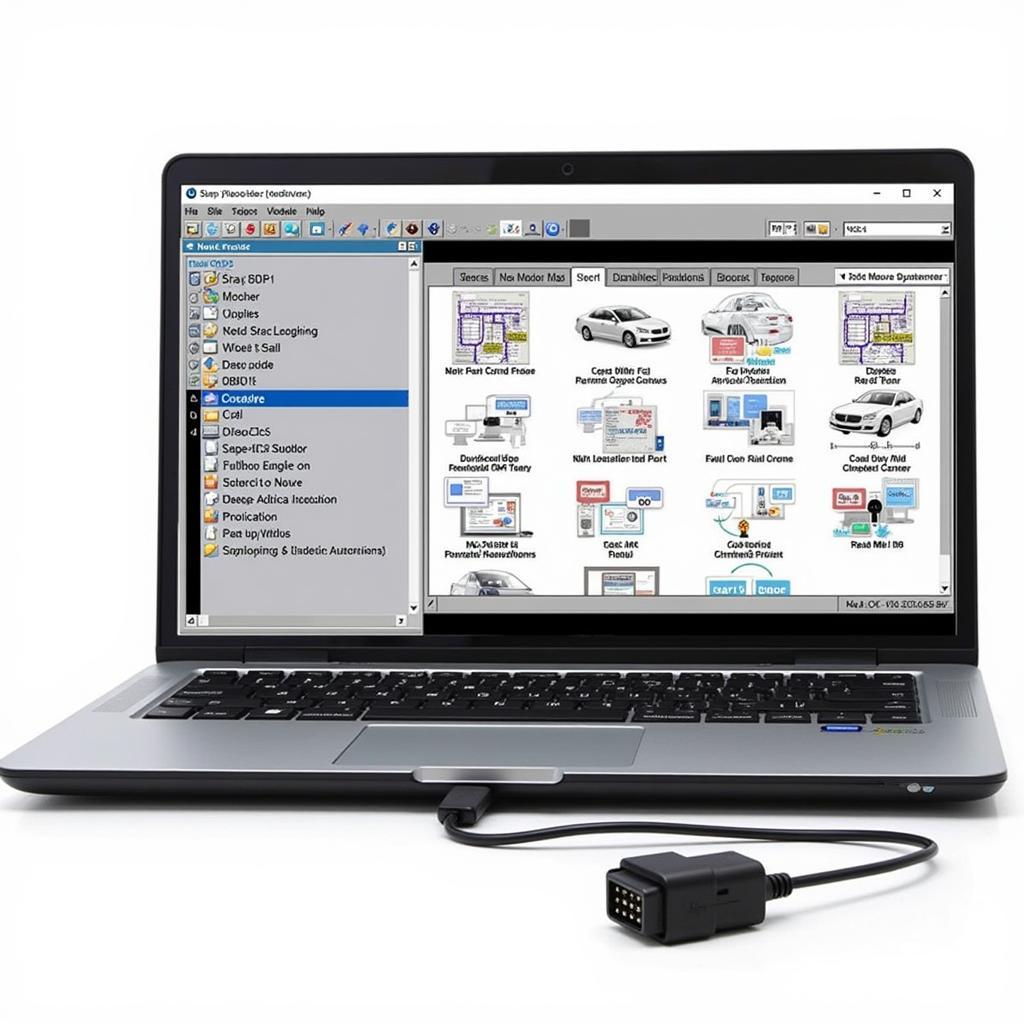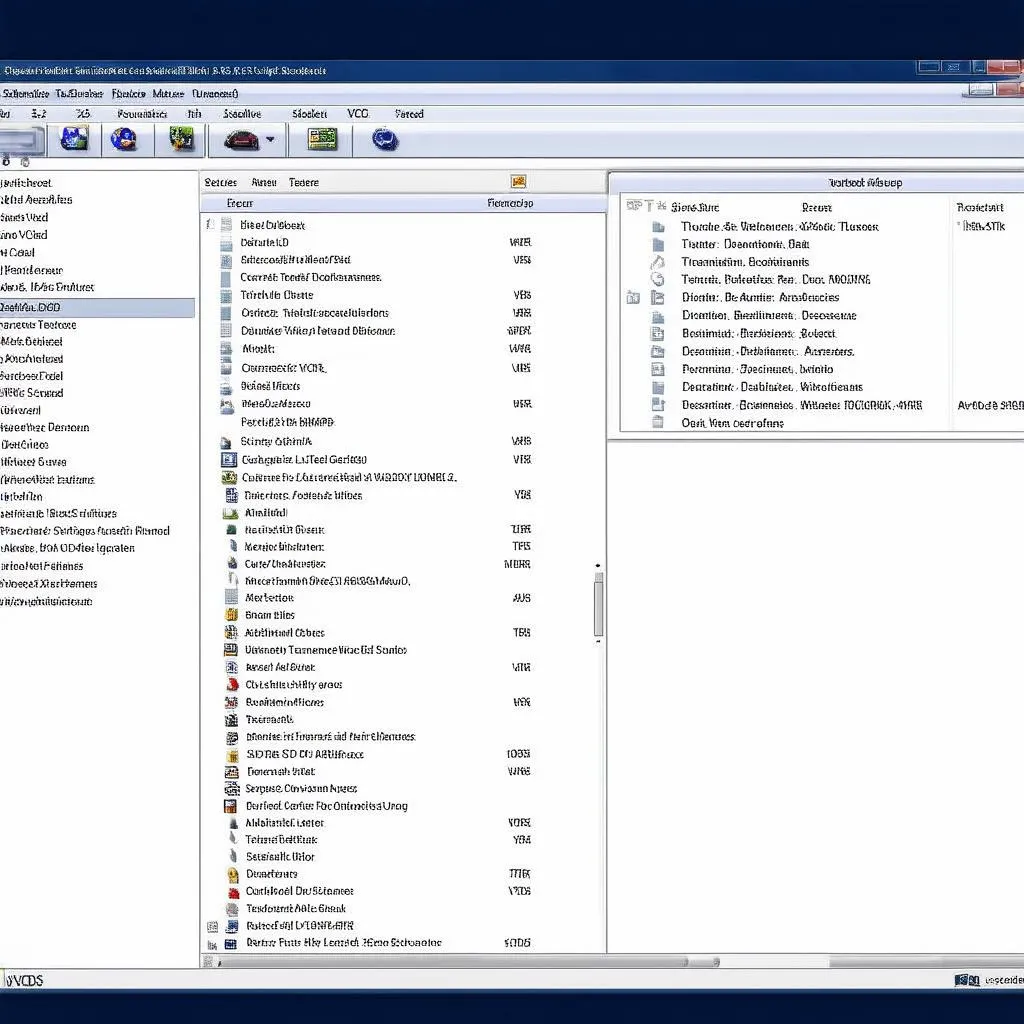Connecting your VCDS (Vag-Com Diagnostic System) to the cloud while using a WiFi connection offers a new dimension to vehicle diagnostics, enabling remote access, data sharing, and advanced analysis. This connection allows mechanics and car owners to tap into powerful cloud-based tools for troubleshooting and programming.
Understanding the Benefits of Cloud-Connected VCDS
Connecting your VCDS to the cloud via WiFi unlocks a range of benefits. Imagine accessing diagnostic data from anywhere, collaborating with experts remotely, and automatically backing up crucial vehicle information. This cloud connectivity streamlines the diagnostic process, saving time and improving accuracy. Cloud integration also opens doors to advanced analytics, allowing for predictive maintenance and identifying potential issues before they become major problems. For workshops, this can translate to increased efficiency and customer satisfaction.
Hardware and Software Requirements for Cloud Connection
To establish a WiFi connection between your VCDS system and the cloud, you’ll need specific hardware and software. Firstly, ensure you have a reliable WiFi adapter compatible with your VCDS system. Some systems have built-in WiFi, while others may require an external adapter. Next, you’ll need a secure cloud platform or software specifically designed for automotive diagnostics. Several options are available, each offering different features and pricing. Choose one that suits your specific needs. Finally, ensure your VCDS software is up-to-date to support cloud connectivity.
Setting Up Your VCDS for WiFi Cloud Connection
The process of setting up your VCDS for WiFi cloud connection is generally straightforward. First, connect your VCDS interface to the vehicle’s OBD-II port and your laptop. Then, establish a stable WiFi connection between your laptop and your network. Next, configure your chosen cloud software by following the provider’s instructions. This usually involves creating an account and entering your VCDS system details. Finally, test the connection by uploading a sample diagnostic scan to the cloud.
Troubleshooting Common Connection Issues
Even with careful setup, connection issues can sometimes arise. One common problem is an unstable WiFi signal. Ensure your router is positioned for optimal coverage and that there’s no interference from other devices. Another issue could be outdated drivers or software. Keeping your VCDS software and drivers updated is crucial for seamless cloud connectivity. Firewall settings can also block the connection. Check your firewall settings and allow the necessary ports for your cloud software. If problems persist, consult your cloud software provider’s support resources or the VCDS community forums.
Security Considerations for Cloud-Connected Diagnostics
Security is paramount when dealing with sensitive vehicle data. When using a cloud-connected VCDS system, prioritize secure cloud platforms that employ robust encryption and access controls. Use strong passwords and implement two-factor authentication whenever possible. Regularly update your VCDS software and cloud software to patch any security vulnerabilities. By taking these precautions, you can ensure the confidentiality and integrity of your diagnostic data.
Advanced Applications of Cloud-Connected VCDS
Beyond basic diagnostics, cloud connectivity opens doors to advanced applications. Remote diagnostics and programming become possible, enabling you to assist clients or access your own vehicle data from anywhere in the world. Cloud-based data storage allows for historical analysis, trend identification, and predictive maintenance. Sharing diagnostic data with colleagues or specialists for collaborative troubleshooting also becomes significantly easier.
“Cloud connectivity has revolutionized the way we approach vehicle diagnostics,” says John Peterson, Lead Automotive Diagnostic Engineer at Peterson Automotive Solutions. “It allows for real-time data sharing and collaboration, leading to faster and more accurate diagnoses.”
Future Trends in Cloud-Based Automotive Diagnostics
The future of automotive diagnostics is undeniably linked to the cloud. Expect to see more sophisticated cloud-based platforms with advanced analytics, artificial intelligence, and machine learning capabilities. These platforms will empower mechanics and car owners with even more powerful diagnostic tools, enabling predictive maintenance, automated troubleshooting, and even remote repairs. The integration of vehicle data with other systems, such as fleet management and insurance, will also become increasingly prevalent.
Conclusion
Connecting your VCDS to the cloud while using a WiFi connection is a significant step towards modernizing your vehicle diagnostics. By leveraging cloud technology, you can unlock new possibilities for remote access, data sharing, and advanced analysis. While ensuring proper security measures, embrace this technology to streamline your diagnostic workflow and enhance your understanding of vehicle performance. Mastering how to connect vcds to cloud while using wifi connection is an essential skill for any modern automotive technician.
FAQ
- What are the advantages of connecting VCDS to the cloud? Improved diagnostics, remote access, data sharing, and predictive maintenance.
- What hardware do I need for cloud connection? A reliable WiFi adapter, a cloud platform, and updated VCDS software.
- How do I troubleshoot connection issues? Check WiFi signal, update drivers, and verify firewall settings.
- What security considerations are important? Use secure platforms, strong passwords, and two-factor authentication.
- What are the future trends in cloud-based diagnostics? AI-powered analysis, automated troubleshooting, and remote repairs.
- Is cloud connectivity suitable for all VCDS users? It’s beneficial for those seeking advanced features and remote access.
- What if I need help with the setup process? Consult the cloud software provider’s support or VCDS community forums.
Common Scenarios and Questions
- Scenario: Unable to connect to the cloud after setup. Question: Have you checked your firewall settings and ensured the correct ports are open?
- Scenario: Intermittent connection drops. Question: Is your WiFi signal strong and stable? Try repositioning your router.
- Scenario: Difficulty interpreting cloud data. Question: Does your chosen cloud platform offer data visualization and analysis tools?
Further Exploration
For more in-depth information on VCDS and related topics, explore our other website articles on vehicle diagnostics, software updates, and advanced troubleshooting techniques.
Need Assistance?
Contact us via Whatsapp: +1 (641) 206-8880, Email: [email protected] or visit us at 276 Reock St, City of Orange, NJ 07050, United States. Our 24/7 customer support team is ready to assist you.



